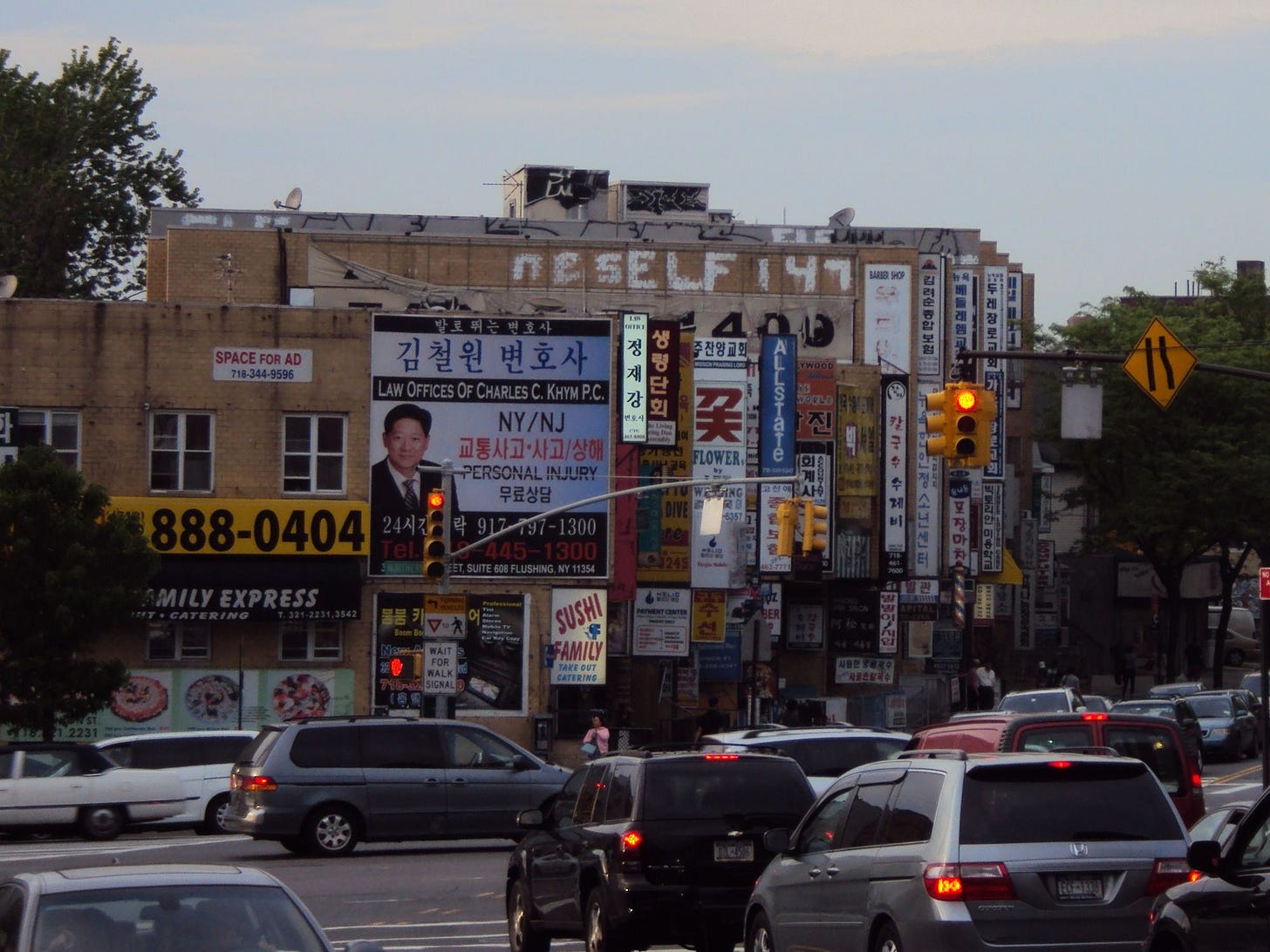Save the magnet schools
Learning is a good thing. If students can do more of it, they should.

New York City Mayor Bill de Blasio set off a firestorm Friday by revealing, with just months left in office, a plan to revamp the New York City elementary schools’ gifted and talented program. Under the new proposal, children would not be identified for accelerated instruction until third grade. Furthermore, those identified for accelerated instruction will be separated from classmates only for a small fraction of the day—rather than being placed in a separate program.
De Blasio’s imminent departure means that the details are subject to change. Lame duck policymaking, where a politician leaves before implementation starts, often suggests a lack of faith in the politics of the plan. The plan may well be reversed or substantially modified by de Blasio’s likely successor, Eric Adams.
These kinds of changes are always controversial, and this one was no exception. But it did not just attract attention at the local level; it quickly attracted the attention of national media figures like Andrew Sullivan and Ben Shapiro, who don’t even live in New York.
Taken in a vacuum, it would be hard to see why de Blasio’s move would be a national story. New York’s current system starts separating a small number of kids as they enter kindergarten, based on a somewhat dubious test. Postponing this a bit and making it easier for students early on to move flexibly between the tracks may very well be a good idea. But de Blasio’s proposal probably goes too far in the other direction; there’s plenty of dispersion in student learning pace, even early on.
And furthermore, critics rightly see this move as part of a larger national movement to eliminate objective measures of academic performance and advanced schooling, in service of an ill-defined equity agenda whose harms fall overwhelmingly on high-achieving Asian-American students. This has sparked a national backlash from parents of affected students who argue that these changes amount to racial discrimination.
I think these parents make a convincing case. I also think it’s worth defending the idea of educational tracking on its merits. Put simply: students learn at different rates, and all students benefit from having classmates with similar abilities. Advanced students benefit from being in classrooms that present advanced material and move through it quickly. But less advanced students equally benefit from classrooms that move through material at a more deliberate pace, giving them plenty of time to master each topic before moving on to the next one.
The national stakes are high against dubious goals
Accelerated programs and schools in a variety of cities are under intense pressure to abandon their admission standards for poorly-articulated reasons. The fallout of these initiatives often falls heavily, or even exclusively, on Asian American students.
These controversies range from the Lowell School in San Francisco to the Thomas Jefferson High School for Science and Technology in Northern Virginia. In New York, de Blasio pushed to change the city’s exam-based admissions to top schools like Stuyvesant High School or the Bronx High School of Science, but their admissions standards are currently determined by state law.
The charge against all of these schools is often that their racial composition does not match that of the underlying school district. The New York Times goes as far as to describe this as “segregation,” both for the exam high schools and the early gifted program.
But it also plays coy with what the numbers actually are: “about 75 percent of the roughly 16,000 students in gifted elementary school classes are white or Asian American,” it declares of the program, a puzzling grouping that should require some further explanation.
You have to look elsewhere, to the education policy outlet Chalkbeat, to find a detailed breakdown: the plurality are Asian American. This is a common trend in accelerated public school programs. (One reason white children are less represented than one might expect in such programs is that many attend private school.) Lowell is majority Asian. At Thomas Jefferson and Stuyvesant, Asians are about 70 percent of the class—or at least, were.
In a change to admissions for the Thomas Jefferson Class of 2025, the school board eliminated the entrance exam and placed explicit caps on admissions from each middle school: caps that would likely be most binding on heavily-Asian schools that traditionally send a lot of high-achieving kids to Thomas Jefferson. As a result of these changes, admissions for Asian students plummeted by 19 percentage points. Every other group gained. A coalition of parents, alumni, and Pacific Legal Foundation attorneys argue this is unconstitutional racial discrimination.
“Everybody knows the policy is not race neutral, and that it's designed to affect the racial composition of the school,” wrote federal district Judge Claude Hilton in a May ruling that allowed the lawsuit to proceed. He declined to issue an injunction against the already-completed admissions process for the Class of 2025.
In a nutshell, the New York elementary school move is part of a larger pattern of equity initiatives with a structural bias against middle-income Asian American families from enclaves like Flushing, a majority-Chinese neighborhood of Queens.
Different kids learn at different rates

I agree with the fairness concerns of the Coalition for TJ, and similar concerns raised in New York by elected officials from Queens like Ron Kim and John Liu. But I also think it is important to make an affirmative case for academic tracking.
It helps to have students in any given classroom be on the same page. Different levels of instruction in different classrooms help make this possible, in a variety of subject matters and at a variety of ages.
Consider, for example, reading at the elementary school level. It would not be unusual to have a group of children the same age where some read Frog and Toad Are Friends at home, while others read The Boxcar Children at home. While these are both wonderful books, The Boxcar Children is about six times longer and it uses more complex language.
If you want the class to read books together, there is an intractable problem: either you pick a book that is too difficult for some of your students, or you pick one that is too easy for others. There are solutions for this: giving children reading time and allowing them to choose their own books. But the solution that allows the class to read together on something interesting and challenging is simply to have multiple classes.
This isn’t necessarily about choosing between the interests of the more advanced students and those who are progressing more slowly—both students are likely to benefit from having multiple tracks. More advanced students obviously benefit from material that challenges them. At the same time, students who learn more slowly won’t necessarily benefit from sharing a classroom with kids who find the material easy and may show signs of boredom or impatience with the slow pace.
Early differentiation doesn’t have to be irrevocable, either; plenty of people should (and do) move back and forth between faster-paced and slower-paced curriculums, both within schools and across them. At selective high schools, for example, there are plenty of students who excelled at non-selective middle schools. The benefits of any individual intervention are likely small, but eventually they accumulate for students who consistently need a faster pace, potentially putting them years ahead.
The need for tracking becomes obvious at later levels, like high school science. For example, for some physics students, you might say that velocity is a derivative of position with respect to time, and acceleration is a derivative of velocity with respect to time; therefore, acceleration is a second derivative of position with respect to time. If you have recently started learning basic calculus concepts, this is a marvelous application of concepts you learned elsewhere in the curriculum. However, if you haven’t heard of derivatives yet and are still working on prior math concepts, this does not help you one bit.
There is not much of a middle ground here; you either include material like this or you don’t. The solution is to have different science classes that depend on math background.
Academic tracking is worth it
So what’s the harm in slowing things down? Why not have students just take it easy? Because progressing through schooling quickly, when possible, is self-evidently a good thing. Learning in school is good, so if you can do more learning in school, that is better.
Some of the most important roles in society require extreme amounts of talent and education. The four schools I’ve mentioned here: Bronx Science, Stuyvesant, Lowell, and Thomas Jefferson—have produced sixteen Nobel laureates, plus countless engineers, computer scientists, and mathematicians. And even this extraordinary record probably sells them short. They do well by their “ordinary” graduates as well.
The next generation of aerospace engineers or artificial intelligence researchers will need to spend years studying advanced scientific and mathematical concepts—concepts that the vast majority of students will never get to—before they can do cutting-edge work. Moving some of that training to high school not only lets the most talented people reach the frontier sooner, it may also widen the pipeline into those professions, since more students will enter college ready for advanced work and will therefore face less of a stark tradeoff between academics and a fun college experience.
Much of our self-driving car research came from, essentially, extra-curricular projects or advanced electives at Carnegie Mellon and Stanford. Getting people through the intro courses and into advanced specialties or projects is not just good for the students; it’s good for the world.
If there is clear separation between the curriculum that challenges one student versus another, there is a strong case for magnet schools. Schools can only be so large, and can only afford to offer so many classes. If there isn’t sufficient student demand for a class, it can’t be offered.
Grouping together students with similar academic needs makes it economical for schools to offer courses that wouldn’t exist otherwise. For example, Thomas Jefferson offers not just Advanced Placement Calculus BC, but also Multivariable Calculus and Linear Algebra, and then, incredibly, several more math courses after that. By grouping high-achieving students together, schools like Stuyvesant can provide higher-level math with a much smaller per-pupil budget than the average New York City school.
Post-calculus math is often not available in other schools. The San Francisco United School District (SFUSD) schools, which abandoned tracking for equity reasons, now puts algebra as a 9th grade course, and calculus as a 12th grade one, leaving no time for additional coursework. SFUSD boldly declares that “de-tracking has a positive impact on all students.” This seems false to me. The students out of Thomas Jefferson often know vector calculus, and I’m sure that more SFUSD students would too if school officials weren’t trying to stop them.
The actual provision of education services is what school tracking should be about: giving students work that is actually challenging and interesting for them. If a school is about providing advanced math classes, it should admit the people that want to take advanced math classes. And if a school is about providing a more typical curriculum with algebra in 9th grade, it should focus on doing that well.
The farther we get into the subject of moral desert for “gifted” labels, and the less we care about what kind of coursework students need, the worse our school system will be.
Feedback helps us write better and grow this community. Your comments, emails, and social media engagement are always welcome.

